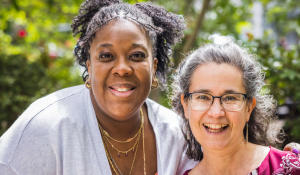
Around the world, people garden for food, fun, and their wellbeing. But this pastime can be pricey. Plus, buying a lot of gardening supplies generates more climate-altering greenhouse gas emissions and causes other negative environmental impacts. Luckily, with a little planning and creativity, you can grow veggies, fruits, and other plants without breaking the bank or burdening the Earth.
Use free seeds
The easiest place to get seeds without paying a cent is likely your kitchen. Simply eat the produce you want to plant and collect the seeds, whether that’s tomatoes from your fridge or coriander from your spice cabinet. Spread them apart to dry and regularly turn them in a non-plastic container with good air circulation. You can also save seeds from the garden for next year.
Connect with local and virtual groups that promote seed sharing, such as seed libraries or the Great American Seed Swap/Trade Project. You can even request seeds as presents to make gift shopping straightforward for friends and family! Just ask for organic seeds in paper packets from local companies.
Save on soil
Soil is often one of the largest gardening expenses, but it doesn’t have to be that way. If you have access to soil in a yard, use that and supplement with compost or sheet mulching to boost organic matter. Otherwise, ask local garden clubs or farms for ideas.
If you must buy, choose organic and avoid peat because of its climate impacts. Many garden stores sell soil by the cubic yard, which is cheaper and more ecofriendly than plastic bags of soil. If you can’t transport that much by yourself, some garden centers and landscaping businesses will deliver.
Transform trash into planters
The great thing about container gardening is that it works well even in spaces as tiny as a Manhattan studio, and it can be cheap. All you need to begin are durable reusable containers to plant in, preferably ones that have drainage holes or those you can add drainage holes to with a drill or pair of scissors.
Scavenge your recycling bin for small containers to fill with soil and start seeds. Look around your home for buckets, kitchenware, old wooden drawers, or even rainboots that could take on a second life in the garden. Check if anyone you know is getting rid of items that could function as planters and watch out for promising discarded stuff like pallets on the streets. Search your local thrift shop, Freecycle, or Craigslist. Who knows, one day you might even chance upon actual terracotta pots or garden planters!
Take advantage of rain and efficient watering
Harvest rainwater to care for your plants, keep your utility bill down, and conserve water. Plants prefer rainwater, which contains less chlorine, provides more nutrients, and has an ideal pH compared to tap water, which could all mean fewer costly inputs. Be aware of what your roof is made of before using this water on edible plants as certain materials could contaminate the water.
Place a barrel or anything big and sturdy under a gutter to store the rainwater, even a trashcan or cooler. Then either dip into the barrel with your watering can or build a simple DIY barrel with hose for larger vessels. Create a soaker hose by poking holes in a regular old garden hose. It takes just a few minutes and delivers water directly to your plant, saving time and water.
Limit spending on tools
Forget the fancy tools and stick to the gardening basics. All you really need is a rake and a small shovel or garden fork. Consider purchasing them used or repurpose kitchen and other household items.
Alternatively, pool funds with pals, relatives, neighbors, or gardening club members to acquire shared equipment—even during COVID, you can safely share tools if you clean them before use. A government agency or nonprofit near you might loan out tools, too. For instance, Berkeley, CA and Washington, DC both lend at no charge to residents. Find a tool lending library in your area, or start one.
Compost organic waste
Composting is a key method of regenerative agriculture and Climate Victory Gardening that turns seemingly useless organic matter into food for your plants and soil. This enables you to replace store-bought fertilizers, reduce landfill methane emissions, and draw down carbon into the soil.
Start an effortless compost pile by heaping kitchen and yard scraps outside your house and leaving them to decompose. Throw in paper, cardboard, grass clippings, leaves, fruit and vegetable scraps, and coffee grounds. If you prefer something that’s a bit prettier and generates compost faster, you can build a holding bin out of recycled wood or old pallets. If you don’t have a yard, you can still compost via municipal programs that, in some areas, can even lower your waste collection bill.
These steps will set you on the right track to produce your own food, foster healthier soils, sequester carbon, and protect the environment — all for practically no cost!
Make sure your frugal garden is on the Climate Victory Gardens map!






